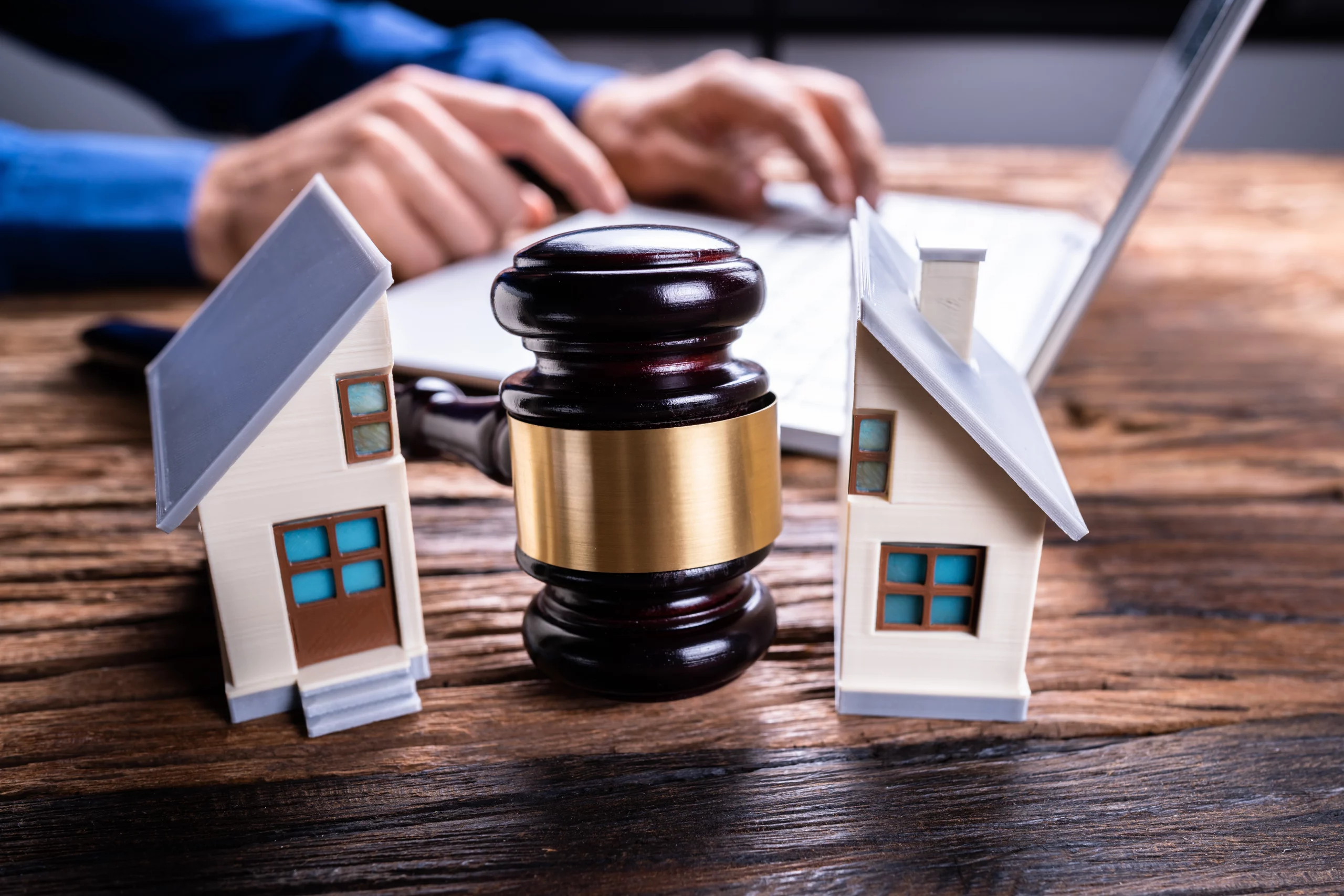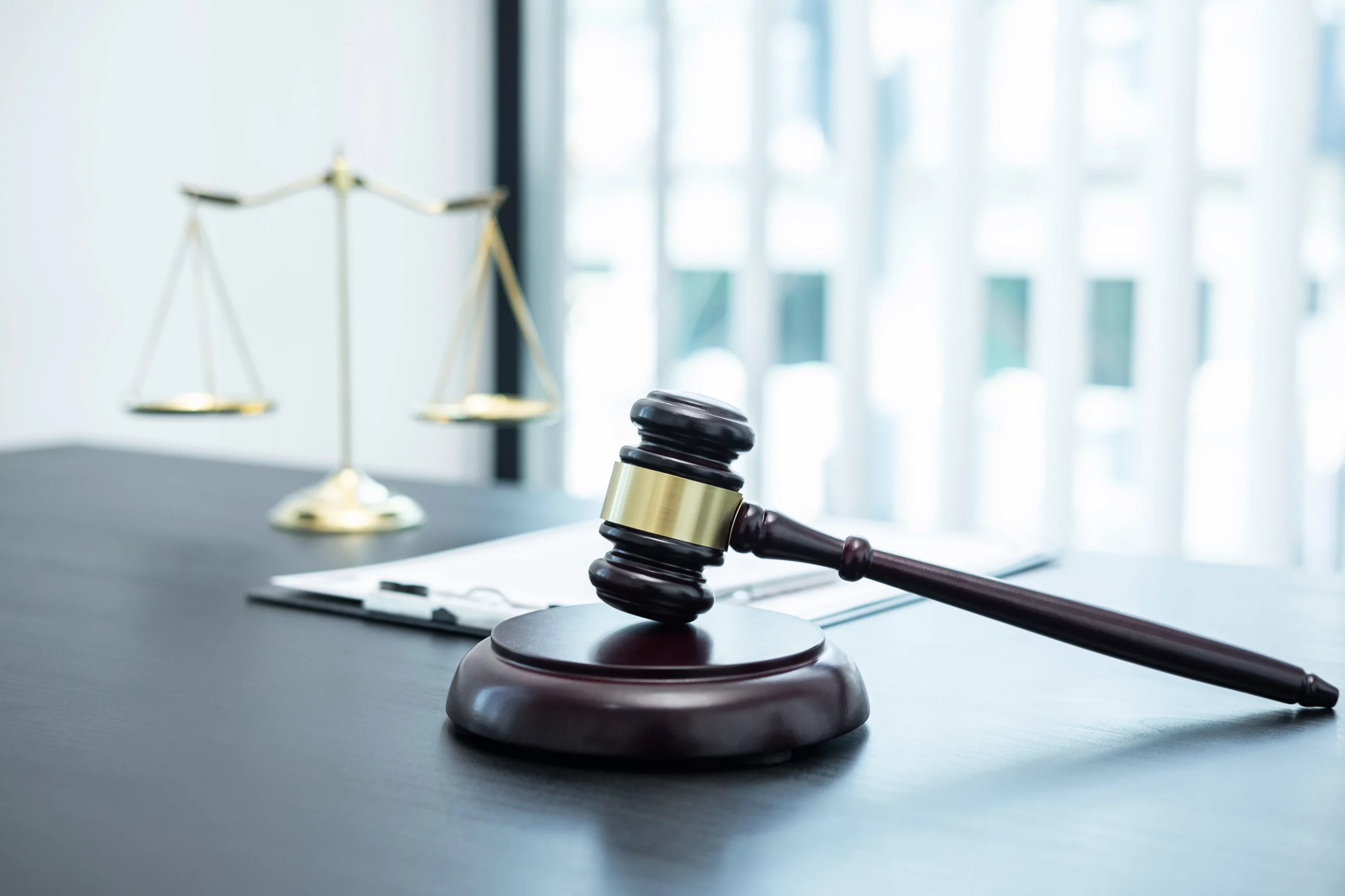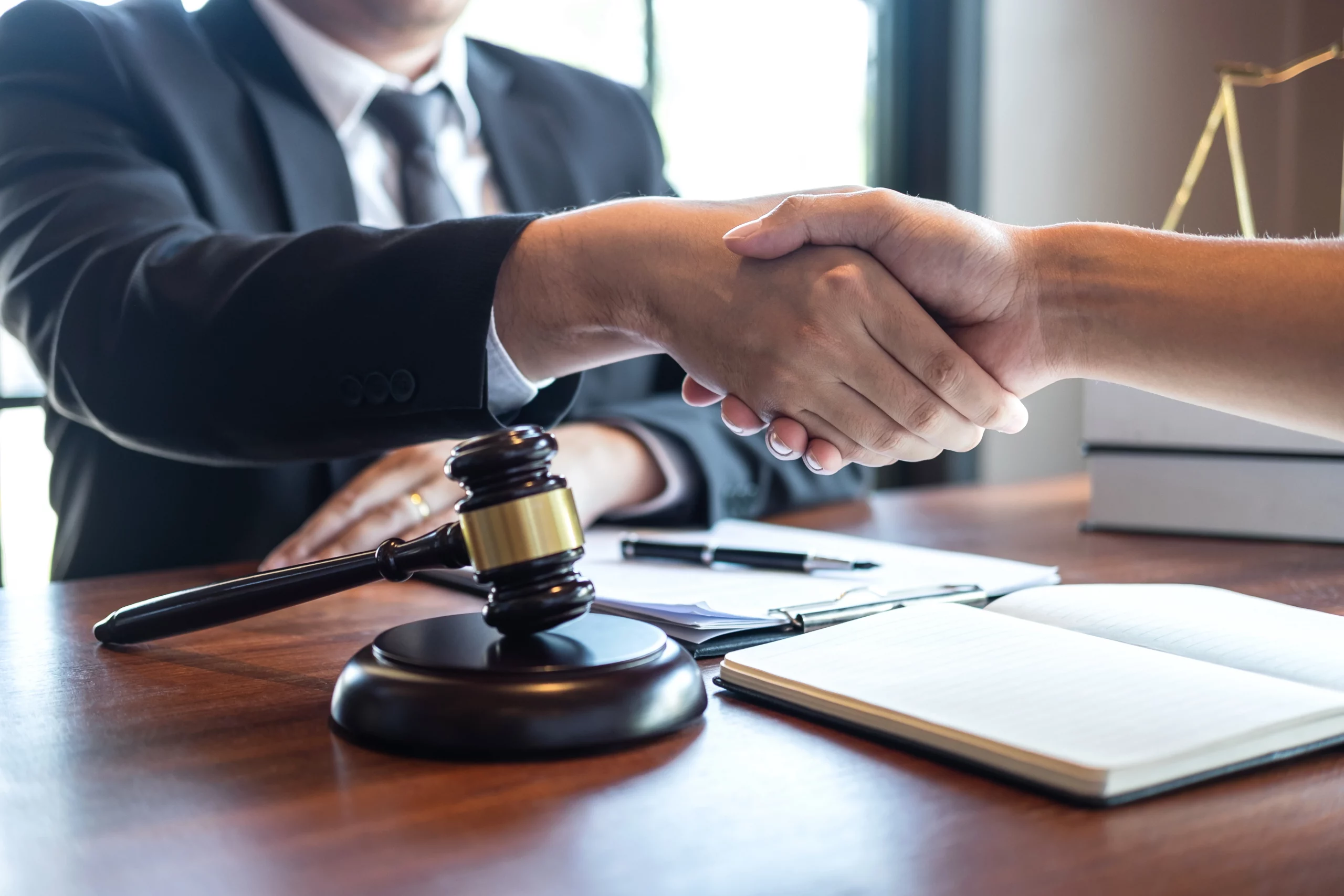What to Know About Comparative Fault for Slip & Fall Claims
The Best Premises Liability Injury Law Firm
Premises Liability > Claims > Comparative Fault
Learn how insurance companies use shared negligence laws to avoid payment. Here’s how you can prove the slip and fall was not your fault.
Many slip and fall incidents occur away from home, caused by the business or property owner’s inability to take care of a hazardous situation on the premises.
If you suffer an injury on someone else’s property, you can file a claim against the owner for damages through their liability insurance policy.
The responsibility for a slip-and-fall accident may lie partially with the victim and the property owner. Unfortunately, in too many cases, the insurance adjuster erroneously tries to transfer part or all of the blame to the victim to avoid paying the entire amount of their slip and fall injury claim.
Claims of comparative or contributory negligence are often made in circumstances of slip and fall accidents because of the possibility of joint guilt or blame.
When a property owner or their insurer uses the “shared negligence” defense, they argue that they should not have to pay for your damages because you were partially responsible for the accident.
Victims of injuries should be aware that they can dispute such claims and still win the financial compensation to which they are legally entitled. You need to know where to prove the slip and fall accident was not all your fault.
Injury Claims
Free Consultation
NO FEE UNLESS WE WIN
The Concept of Comparative Negligence
For something to be considered negligent, the responsible party must have shown a lack of due care in carrying it out.
To win a case involving injuries sustained from a slip and fall, you must show that the property owner or manager behaved negligently and that their actions directly caused your injuries.
The burden of proof lies with you in slip and fall accidents, where you must show that the property owner knew or should have known of an unsafe condition but did nothing to remedy it.
A homeowner could invoke the doctrine of comparative negligence to throw out your carelessness claim if you were also somewhat at fault. The assertion says that you were also negligent in your slip and fall accident or shared the blame for it.
You may have slipped on the snowy pavement outside a business because your shoes were old and had lost their grip. The claims adjuster will likely use the comparative negligence defense if you claim injuries. The claims adjuster will argue that the corporation has no obligation to compensate you because your worn shoes contributed to the accident.
Most states in the U.S. have a system of comparative negligence statutes which apply to all sorts of harm claims. According to these statutes, the injured parties who partially contributed to an accident’s cause are entitled to compensation from the party who was more at fault.
In the case of the slippery sidewalk, for instance, the insurance company can conclude that you were 10% at fault for the accident. If you settle your claim for $10,000, you’ll receive $9,000 in compensation.
But what if the adjuster decided you were 60 percent to blame for wearing shoes in snowy weather? If you were partially or wholly responsible for the incident, you typically could not sue the property owner for damages in most states.
Don’t give the insurance adjuster the final say over your potential payout. If you were not at fault or not nearly as fault as the property owner, you can dispute the adjuster’s determination of your proportion of the blame.
Among the states with comparative negligence laws, several criteria impact how much compensation you can claim if a slip and fall accident was partly your fault.
Attributable to Comparative Failure
Only ten discrete fault states can be considered pure comparisons. Pure comparative fault laws indicate that slip and fall victims can recover payments for their losses even if a property owner was only slightly irresponsible, while the individual who fell was primarily to blame.
Example Of Pure Comparative Fault
Lisa needs some goods quickly but has to run errands. She enters a grocery shop and sprints through the produce department. She is wearing flip-flops and ranting on her phone.
Soon after, Lisa stumbled over some grapes falling off a display table. She twists her right ankle and incurs medical bills and lost wages totaling $10,000.
The store’s insurance company receives Lisa’s claim for an injury. She agreed with the adjuster that she was 75% to blame for the accident. They agree to settle her claim for $2,500.
Here, Lisa can still obtain compensation even if she is substantially to blame for the disaster.
Several contrasting fault conditions are:
- California
- Florida
- The Big Apple
- Washington
Modified Comparative Fault
Injured plaintiffs can only receive compensation under particular conditions in modified comparative fault jurisdictions.
It’s well known that some states have a population density of 50.1% or lower. In some jurisdictions, victims can only sue for damages if they are found to be 49 percent or less culpable for their harm. The statutes also specify that victims can claim if they were equally at blame for inflicting an injury.
The majority of states have less than 51% of the population, and this includes:
- Connecticut
- Illinois
- Indiana
- Wisconsin
In contrast, states below 50% are considered modified comparative fault states. Compensation is available in these states only if the victim was less than half liable for their injury.
Only if the property owner is more at fault than the victim is entitled to compensation for a slip and fall. If the victim is equally or more to blame, they are banned from getting compensation from the other at-fault party.
Some of the states with less than half coverage are:
- Colorado
- Georgia
- Kansas
- Tennessee
Example Of Modified Comparative Fault
John is making his way back down the escalator in a department shop. He’s looking up the most recent menswear trends on his phone. As he comes near the base of the stairs, he trips and falls over a floor mat that somehow pushes its way onto the stairway.
In doing so, John tries to break his fall with his hands and breaks his right wrist. He receives emergency care and will require physical therapy.
John’s home is in Illinois. When he files an injury claim with the store’s insurance carrier, he agrees with the adjuster that he is 50 percent responsible for the accident.
John will still be able to collect compensation if the claim is settled, but he will receive only 50% of the total amount. John can collect compensation because he was less than 51 percent to blame for his injury.
John would be entitled to no compensation for his injuries in a jurisdiction with a 50 percent bar, such as Colorado. Given his participation in the misdeed, he cannot claim any damages.
Gross Negligence On Someone Else’s Part
There are still strong contributory negligence standards in four states and the District of Columbia because they refused to embrace comparative fault statutes.
The idea of pure contributory negligence states that if you share any degree of fault for an accident, you can’t sue someone else for carelessly causing it.
In other words, in contributory negligence jurisdictions, you cannot seek compensation for injuries sustained because of your negligence.
If you are even 1 percent at fault for what caused your fall, you will not be compensated for your injuries in a state that follows the “pure contributory negligence” rule.
Fighting Back When They Blame You
Insurance adjusters will always take legal action against a claimant who has suffered an injury. Since denying claims saves their employers money and benefits the adjuster’s career, they actively seek ways to do so.
Insurers often try to place the blame for a fall accident on the person who filed the claim.
They might accuse you of things like:
- Didn’t look where you were going, for starters
- Ignoring the red flags
- Wore unsuitable footwear
- Entered a portion of the property that is off-limits to customers or visitors
- Were you acting erratically or running too fast for the circumstances?
- Disregarded a blatantly hazardous situation
- Failed to seek adequate medical attention following a fall
Any one of these positions could lead to a claim denial or a low-ball settlement offer.
Answering Claims Of Comparative Negligence
You can refute an assertion of comparative carelessness by demonstrating that you did nothing to cause your harm.
If an adjuster claims you weren’t paying attention, you’ll need to provide evidence to the contrary. Likewise, if the insurer asserts you were wearing incorrect footwear, you’ll want to demonstrate that your footwear did not influence the circumstance.
Before consulting with an expert personal injury attorney, you should not let the adjuster persuade you to admit partial blame for your slip and fall accident.
Allocation is key if you have to acknowledge responsibility for some failure. Know your state’s comparative negligence regulations, and don’t let the adjuster have the last say on your share of the blame. It can ruin your chances of getting compensated.
Reducing Consequences
In personal injury disputes, wounded people have a duty to mitigate their damages. This duty means they must make necessary efforts to reduce their injuries or losses.
The duty to mitigate often implies that you sought medical attention following your slip and fall accident, listened to your doctor’s instructions, and followed up with any additional recommended treatment (for example, physical therapy) (for example, physical therapy).
Insurance claims adjusters frequently argue that injured parties have some of the blame when losses are not covered by insurance. Insurers want evidence that policyholders made reasonable efforts to limit the financial damage.
In many cases, you can provide:
- Financial documents and medical invoices
- Evidence-based practice: medical practitioners’ written statements
- Any documentation from your employer attesting to your reduced workload, such as letters, notes, or emails
- Notations in a journal evidencing the absence of participation in prearranged activities because of your health condition
You’ll need to react if the adjuster alleges that you made your injuries worse. If you followed every one of your doctor’s directions, say so and show your evidence.
If your doctor instructed you to be off your feet for two weeks, but there’s a video on social media of you dancing at a wedding three days after your slip and fall, you’ll have to work harder to prove you’re still entitled to injury compensation.
In Instances Where The Risk Is Plain To See
It is common practice for insurers to assert policyholder fault by arguing that any hazardous condition on the property was plain to see.
Any reasonable individual, it is argued, should have recognized the problem and taken precautions.
Remember that there is a significant caveat in this case. This doesn’t apply only if you were too preoccupied with something else to see the blatant risk. You must also prove that the property owner should have anticipated your disruption.
If you can establish that you didn’t perceive the hazard, then the open and obvious argument disappears.
A Slip And Fall Victim Was Found Not Guilty On Appeal
In October 2009, Steven Henderson tripped and fell on his condominium building entryway stoop and steps. It was pouring before and at the time of the accident. Henderson received severe injuries to his left ankle and knee, which required many operations.
In the year before Henderson’s fall, the condo’s property manager hired a business to repair the building’s common spaces, including the stairs and stoop. The maintenance business sprayed a concrete epoxy coating on the stoop and stairs, which made the stairs slippery when wet. Henderson stated that he had complained to the condo property management after slipping twice on the steps the previous year.
Through his attorney, Henderson filed an injury claim against the condo building owner, the property manager, and the maintenance firm that applied the epoxy.
Since the stairs posed an “open and clear risk” that Henderson was aware of, defense attorneys representing the condo owner, property manager, and maintenance business asked the judge to toss the lawsuit. The defendants claimed they were not responsible for Henderson’s safety because the danger was “open and evident.”
Henderson’s attorney contended that the “open and clear risk” defense did not apply when a reasonable person would be distracted or forget about the possible threat. In this example, Henderson was returning home at night in the rain and wasn’t thinking about the slippery steps as he was heading up the stairs to get to his dwelling.
The trial court judge sided with the accused and threw out the case.
Henderson and his counsel appealed the lower court’s ruling to the Illinois Supreme Court.
The appellate court finally agreed with Henderson and sided with his distraction allegation. The court ruled that both time and weather conditions led Henderson to not think about the potentially slippery steps.
It was “fairly foreseeable and sufficiently likely that a resident in Henderson’s circumstances would suffer injury from the slippery when wet condition,” the court added, finding that the defendants owed Henderson a duty of care.
The appellate court has remanded the matter to the lower court for further consideration.
Condominium Association of Lofts at Lake Arlington Towne v. Henderson
Evidence the Slip and Fall Wasn’t Your Fault
Evidence will play a crucial role when determining fault in cases of comparative negligence, such as those arising from slip and fall accidents.
You can’t just sit back and deny responsibility if an insurance adjuster suggests you had a hand in causing your slip-and-fall injuries. You will have to back up your allegations with real slip and fall data that indicates you didn’t contribute to your injuries.
If a claims adjuster does raise a comparative negligence claim, listen to the rationale for the allegation. In that case, it would be prudent to examine any supporting data that may be available.
If you locate something that helps limit your fault, then offer that information to the adjuster. You should also emphasize evidence pointing to the property owner’s increased fault.
Remember that it’s your role in a slip and fall case to show:
- First, the property owner was aware of a potentially dangerous situation.
- In addition, the property owner did nothing to correct the problem.
Determine which property owner was more at fault for your injuries by gathering evidence of each and presenting it cohesively.
Awareness Of A Dangerous Situation
Surveillance footage and incident reports are two prominent examples of evidence used to demonstrate understanding.
Surveillance videos Videos captured by surveillance systems are useful because they can pinpoint the exact moment your accident occurred. If there is a long delay between a hazardous condition and your fall, then the video can prove an owner knew or should have known of the danger but did nothing about it.
Incident reports Incident reports are usually generated by retailers and other companies when personnel or visitors are hurt on the site. Exact information about an incident will be documented in these reports. To prove that the property owner, in your case, knew about a hazardous situation but did nothing to fix it, you might look too comparable complaints to see whether the circumstances are the same.
Signs Of A Dangerous Situation
It is typically easier to prove that a dangerous situation existed than to prove that a property owner was responsible for keeping guests safe.
Common unsafe conditions include:
- Broken stairways, handrails, or decks
- Cluttered common areas
- Wet floors
- Damaged, unlighted, or icy sidewalks and parking lots
Physical evidence, like a broken handrail, can indicate that a state is harmful. A slip and fall victim, however, may also present evidence of a hazard through witness accounts, photographs, and videos.
Get this proof as soon as possible after your slip and fall, preferably while you’re still at the incident scene. If you are unable to do this yourself, you should enlist the aid of a companion or a witness.
If your injuries prevent you from acquiring critical evidence, try to return to the accident location as soon as possible.
Take note of the date you took any photographs and any discrepancies between the date of your accident and the date of the photograph’s subject.
Take pictures of anything having to do with the change in season, like:
- Weather conditions
- What happened to you?
- Your clothes (including shoes) (including shoes)
- The location of the accident
Use our free Slip and Fall Evidence Checklist to ensure you don’t forget anything important.
An Assist in Cases of Comparative Negligence
Things can get sticky when the property owner or their insurer tries to blame you for a slip-and-fall accident. The insurance company will try to limit or deny your damage claim if they can successfully pin the blame on you.
Never apologize or acknowledge any guilt after a slip and fall. Don’t let an insurer’s adjuster pressure you into admitting fault before consulting with a seasoned lawyer. You are not necessarily responsible for your slip and fall injuries if they occurred while you were distracted or wearing inappropriate footwear.
A qualified slip and fall attorney will aid you in various ways. They are aware of the comparative negligence laws in your state and will assist you in better comprehending if you genuinely did contribute to your injury.
If it turns out that you are partly to blame, your attorney will make sure your allocation of fault is reasonable and fair so you get an adequate amount of compensation.
A lawyer can utilize subpoenas and other legal instruments to collect evidence like security footage, incident reports, and employee witness testimonies that you would have trouble obtaining on your own.
Slip-and-fall victims can usually get free initial consultations with personal injury lawyers. Also, accident attorneys often work on a contingency fee basis, meaning you only pay legal fees when your case settles or receive a court judgment.
Don’t let an insurance company steal your cash because you might have been somewhat to blame for an incident. Consulting a lawyer about how to disprove liability for a fall you did not cause is free of charge.

FREE CASE REVIEW
We are standing by ready, willing, and able to help you. You can schedule a free consultation here on our website, or give us a call and talk to us. Whatever you prefer, we will accomodate you!








